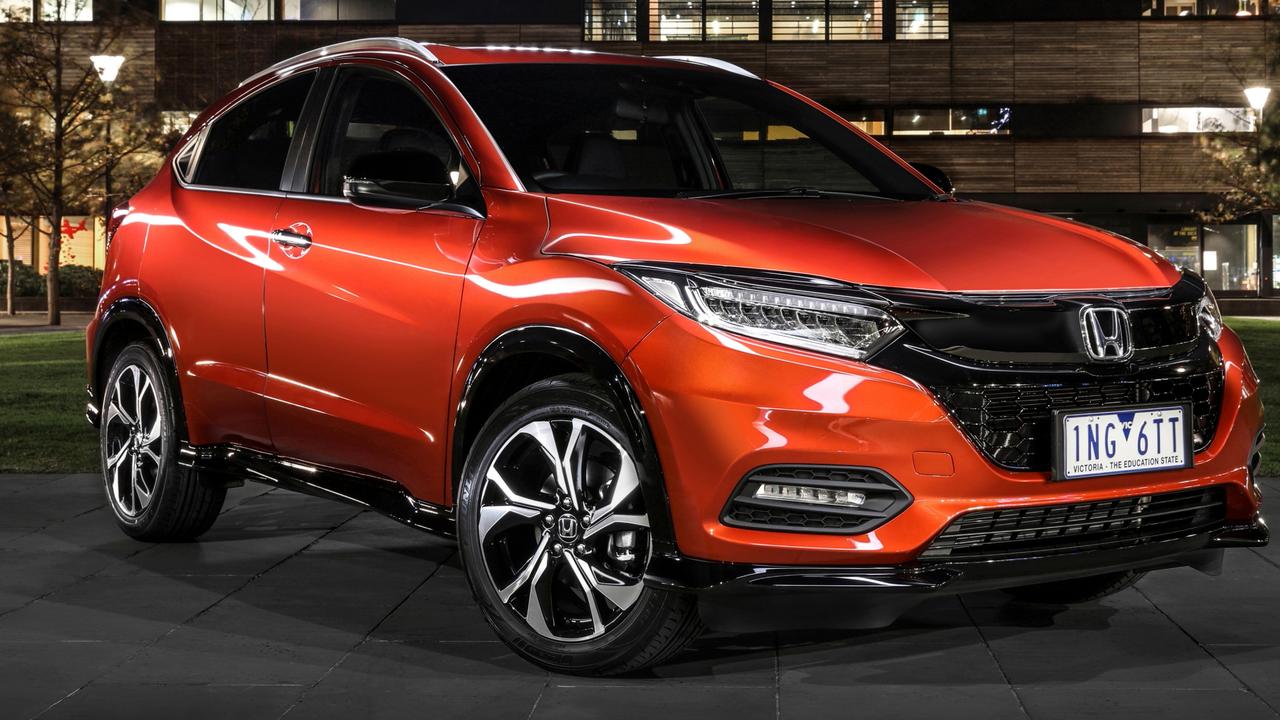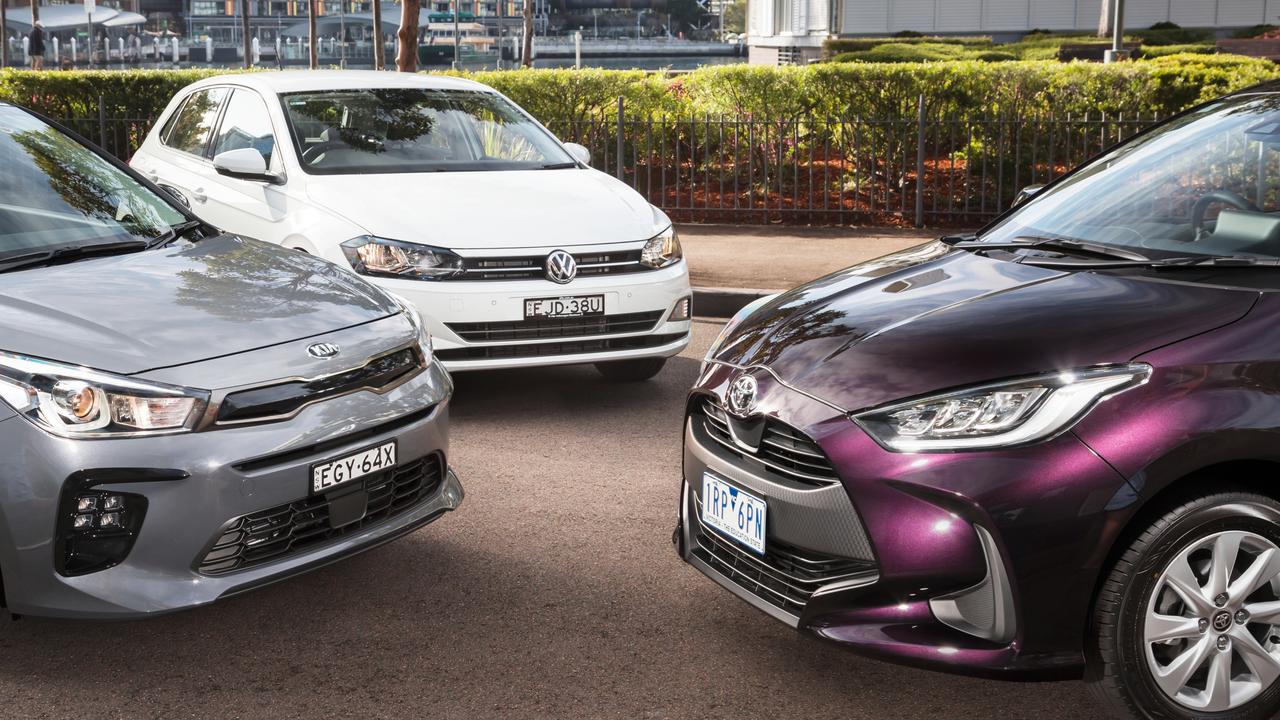New Mitsubishi Pajero Sport review: Tough 4WD belongs off-road
Mitsubishi’s upgraded SUV brings tough looks and go-anywhere ability. But this ute-based machine is best suited to life off the beaten track.
New cars
Don't miss out on the headlines from New cars. Followed categories will be added to My News.
Mitsubishi’s strong-selling Pajero Sport has been updated for 2020 with new styling, safety equipment and technology.
Based on the Triton ute and available as a five or seven-seater, this off-road SUV doubles as urban transport and outback adventurer.
To test the range-topping Exceed in its element, our family hits South Australia’s Flinders Ranges.
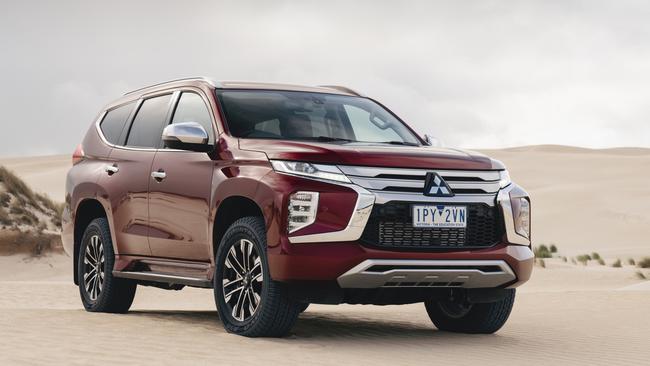
First impressions
Iain: Dreamworld? Not for this year’s holiday. We’re taking the kids bush and where better than the desolate, mythical red landscape of the Flinders Ranges in the height of summer?
Jules: Brave move. Not in a family hatchback I take it?
Iain: Horses for courses. Ute-based SUVs such as the Mitsubishi Pajero Sport are too often confined to suburban school car parks. They’re only relevant if taken on regular adventures off the bitumen.
Jules: I’d find it hard to live with an SUV this big for daily duties but I understand the Pajero Sport’s appeal. It looks rugged and ready for action and isn’t some soft-roading 4WD wannabe.
Iain: It’s got the hardware. You can select between rear-wheel drive and 4WD. It has high and low-range and a locking centre differential for really tough terrain.
Jules: And it’ll tow a giant caravan?
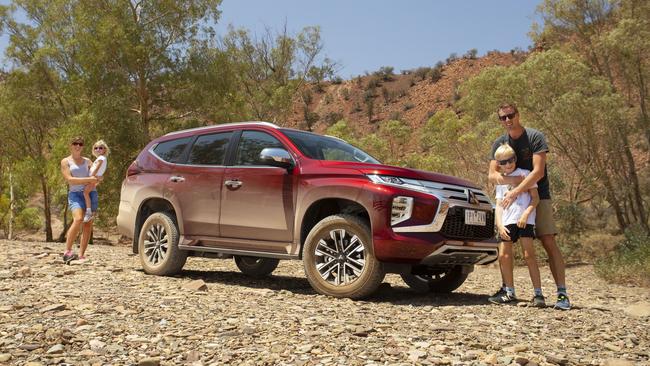
Iain: It’s rated for 3100kg and is a pretty talented tourer. I’ve always been impressed how comfortable these Mitsubishis are for chewing through big kilometres.
Jules: Ours is the range-topper. How much?
Iain: The seven-seater is $60,000 on the road with a quite luxurious cabin. That’s $2700
more than the old one. Rivals include the Isuzu MU-X LS-T for $54,990 drive-away and Ford Everest Sport for $62,990 drive-away.
Jules: It’s a chunky beast with a funny, blingy face. The rear looks better than the old one.
Iain: Shorter vertical rear lights replace the long LED slits of before, plus there are new alloys and a higher bonnet.
The living space
Jules: You climb up into a Pajero Sport. Not ideal for dodgy knees.
Iain: It’s pretty classy when you’re inside. It gets power heated leather seats, digital dashboard and eight-inch screen with built-in satnav and Apple CarPlay/Android Auto.
Jules: It feels more like a proper family SUV than a ute.
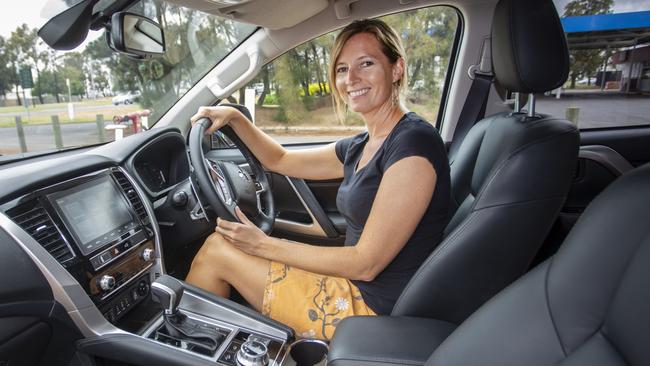
Iain: The plastics are mainly soft to touch, there’s piano black for the centre console plus oodles of storage for phones, drink bottles and travel sweeties.
Jules: Can I be picky? Now I’ve experienced wireless phone charging, I miss it in the Mitsubishi.
Iain: You have to plug in a charge cable to use Apple CarPlay, so I don’t reckon it’s necessary.
Jules: How about wireless CarPlay?
Iain: Moon on a stick? You’ll need an Audi.
The commute
Jules: I don’t like ute-based SUVs in town — they’re big old rigs to manoeuvre.
Iain: There’s no escaping that. It’s a bit bouncy and you’ve really got to slow down for corners as it leans so much. The gearbox can jerk at low speeds too. But if your commute is mainly highway, the Pajero Sport’s good company and the diesel engine’s unstressed at 110km/h.
Jules: Radar cruise control’s great but I’m surprised there’s no lane keep assist. It seems to have every other active safety feature.
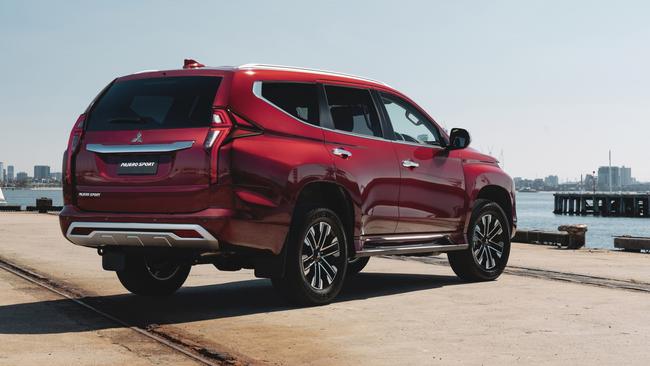
Iain: I don’t mind that. If they have lane keeping, SUVs this big are forever pulling you back into the lane as they often straddle the white lines. On tight roads, that can do more harm than good.
The shopping
Jules: Rear camera, parking sensors all-round and a 360-degree bird’s-eye view camera — that’s brilliant technology to stop car park bingles.
Iain: And rear cross traffic alert that’ll tell you if a car’s coming as you’re reversing.
Jules: Boot space is tight if you’ve got seven seats up. With the third row down, there’s plenty, helped by the spare wheel being under the car.
Iain: There’s a power tailgate — and, get this, if you have an AppleWatch, you just need to twist your arm and the boot opens automatically. Witchcraft.
Sunday run
Jules: Only on an outback adventure can you appreciate this SUV’s talents.
Iain: Got a supercar? You need a racetrack.
Got a Pajero Sport? You must go off-road to justify it.
Jules: After our 1000km mix of bitumen, dirt, rock and sandy roads, I think I get these cars now. You can travel to some exceptional near-deserted areas.
Iain: In surprising comfort too. Thanks to the long suspension travel, rutted roads were tolerable and in full-time 4WD it inspired confidence. The traction control mopped things up safely if we started sliding on loose stuff.
Jules: The kids kept reading their books on unsealed roads and never got sick. Well, until they saw the amount of giant road kill in the outback.
Iain: Some rocky gorge tracks were our toughest sections and even then low-range wasn’t needed. It had talent in reserve.
Jules: Shout out to the soft knee pads in the centre console when we were rocking around. Why don’t all 4WDs have these?
The family
Iain: The kids had acres of middle row space.
I clambered into the third row — it’s not an easy job nor is it particularly spacious.
Jules: The child seat top tether gets clipped into a ceiling point rather than behind the seat. That obscures rear vision and makes third row seats accessible only through the boot.
Iain: On the plus side, the rear ceiling vents worked well, the two kids had a USB point each plus a proper plug socket to charge electronics and a centre armrest.
Jules: I know the Exceed grade is getting expensive but mums appreciate all that active safety kit.
Iain: Help with the family budget comes from the seven-year warranty and it’s only $299 to service for three full years.
Jules: Then there’s the cost of diesel. We averaged 11.7L/100km with lots of unsealed road driving but even on the highway we were getting 9L — the fuel gauge ran down quickly.
Iain: It has a 68L tank versus an Everest’s 80L. I’d want more for this sort of adventuring.
The verdict
Jules: I’d struggle to live with the Pajero Sport as a school drop-off car but after tackling the outback, I’ve fallen for it. It’s so capable and comfortable and looks suitably tough covered in red dust.
Iain: If you won’t be adventuring, buy something like the Outlander stablemate and enjoy a better on-road drive. If you lead an unsealed road life and need space, among all the ute-based seven-seaters the Pajero Sport is hard to top for value, warranty and all-round talent. Just slow down for those corners.
Mitsubishi Pajero Sport Exceed vitals
Price: $59,990 drive-away
Warranty/servicing: 7 years/u’ltd km, $299 for 3 years/45,000km
Engine: 2.4-litre 4-cyl turbo diesel, 133kW/430Nm
Safety: 5 stars, 7 airbags, AEB, rear camera, rear sensors, adaptive cruise control, blind-spot warning, emergency brake assist, bird’s-eye camera, lane change assist, rear cross traffic alert
Thirst: 8.0L/100km
Spare: Full-size
Boot: 131L/502L/1488L
Towing: 3100kg
Originally published as New Mitsubishi Pajero Sport review: Tough 4WD belongs off-road

